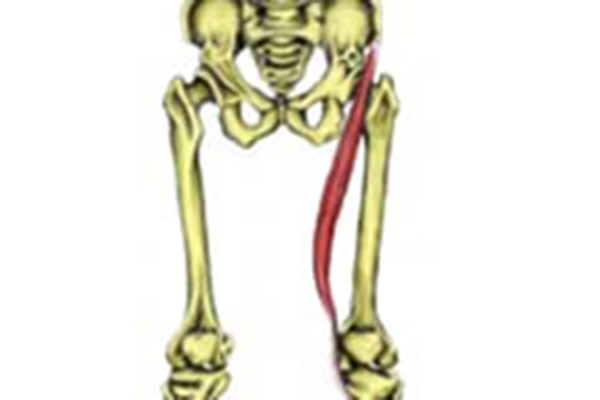
The sartorius muscle is the longest muscle in the human body and has a unique oblique course from the lateral side of the hip to the medial side of the knee. Here’s a detailed explanation of the sartorius muscle:
Anatomy:
- Origin: The sartorius originates from two points:
- Anterior superior iliac spine (ASIS): This is a bony projection at the front of the pelvis.
- The notch between the anterior and inferior iliac spines.
- Insertion: The sartorius inserts into the medial surface of the tibia, specifically at the pes anserinus, a common insertion point shared with the gracilis and semitendinosus muscles.
- Course: The sartorius runs obliquely across the anterior aspect of the thigh, extending from the hip to the knee. This unique course gives it the nickname “tailor’s muscle” because its action is reminiscent of the cross-legged position used by tailors while working.
Function:
- Flexion, Abduction, and Lateral Rotation of the Hip: The sartorius assists in flexing the hip joint, bringing the thigh towards the abdomen. It also contributes to abduction (moving the thigh away from the midline of the body) and lateral rotation (outward rotation) of the hip.
- Flexion of the Knee: Additionally, the sartorius flexes the knee joint, aiding in movements like sitting cross-legged.
- Weakness: Weakness or dysfunction of the sartorius can result in difficulties with activities such as climbing stairs, walking, or sitting cross-legged.
Clinical Significance:
- The sartorius muscle is susceptible to injury, particularly in sports that involve rapid changes of direction, such as soccer or basketball.
- Tightness or dysfunction in the sartorius can contribute to issues such as hip or knee pain, altered gait mechanics, and decreased flexibility.
Overall, the sartorius muscle plays a crucial role in various movements of the hip and knee joints, contributing to the flexibility and stability of the lower extremities.